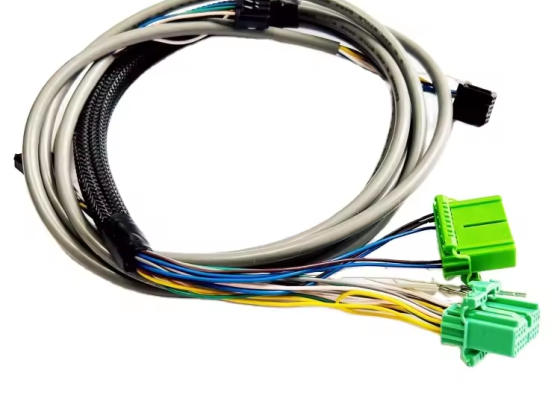
Custom Auto new energy vehicles OBD2 car adapter cable Harness
Factory Custom Auto new energy vehicles OBD2 car adapter cable Harness .This Custom Auto Wire Harness features a versatile 26 pin and 16 pin car adapter cable, specifically designed for Model 3Y OBD2 car adapter cables. Engineered for new energy vehicles, it ensures seamless connectivity and data transfer, enhancing the functionality of your electric car's diagnostic and charging systems.
- Evershine
- Xiamen
- 7~15 days
- 100000pcs/month
- Information








Automotive cables play a crucial role in cars, mainly including the following aspects:
1. Transmission of electrical energy: The car connection line connects the power supply and electrical equipment through wires to achieve the transmission of electrical energy. This is the most basic function of car cables and the fundamental reason for their existence.
2. Signal transmission: Automotive cables can achieve signal transmission between various electrical devices, such as switch signals, sensor signals, etc. These signals are crucial for the normal operation of cars, such as engine control systems, brake systems, navigation systems, etc., all of which require signal transmission through car connectors.
3. Data transmission: With the development of automotive electronics and intelligence, car cables still need to transmit a large amount of data, such as in car entertainment systems, car networking systems, etc. These data are of great significance for improving the performance, comfort, and safety of automobiles.
4. Maintain the normal working condition of electrical equipment: The car connecting wire connects the electrical equipment to the ground to help dissipate heat, avoid overheating and damage to the electrical equipment, and prevent electromagnetic interference from affecting the normal operation of the equipment.
5. Safety protection: When there is a short circuit or leakage in the car's electrical system, the grounding wire can introduce excess current into the ground to prevent the car's electrical equipment from burning out due to overload and ensure driving safety.
6. Emergency start and charging: When the battery is low or damaged, a grounding wire can be used to connect the batteries of other vehicles to the vehicle that needs to be started or charged, achieving the functions of emergency start and charging.
7. Fault diagnosis: During the process of car maintenance, using a grounding wire can better check whether the vehicle's electrical system is working properly, thereby quickly finding and eliminating faults.
1. The core function of automotive wiring harness
Electrical Connection and Network Construction
The automotive wiring harness integrates dispersed electronic devices (such as sensors, control modules, actuators, etc.) into a unified circuit network through connectors and wires, which is the physical foundation of the automotive electrical system. Without wiring harnesses, car circuits cannot be formed.
2.Electricity and signal transmission
Power support: provides power for ignition systems, lighting systems, air conditioning, etc., for example, the engine wiring harness needs to transmit a starting current of up to 300A-1000A.
Signal interaction: Connect sensors and ECUs (such as ABS wheel speed sensors, airbag collision sensors) to achieve real-time data transmission, using shielded wires to resist interference.
3.Protection and stability guarantee
By designing insulators, protective sleeves, etc., the wires are prevented from being damaged due to vibration, friction, or moisture, thereby enhancing the safety and durability of the entire vehicle
In new energy vehicles, the role of automotive wiring harness is crucial. It is responsible for high-voltage power transmission, safely delivering the high voltage and high current of the power battery to high-voltage components such as the drive motor and charging system, ensuring the realization of vehicle power output and charging functions. For example, the operation of the driving motor requires stable high-voltage electricity, which is accurately transmitted through the wiring harness. At the same time, the wiring harness undertakes the task of transmitting low-voltage signals, connecting sensors and controllers such as battery management systems (BMS) and vehicle control systems, transmitting signals such as battery level,
























